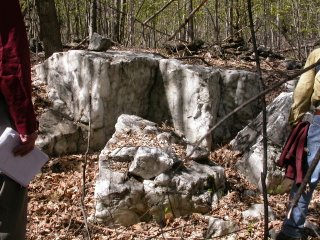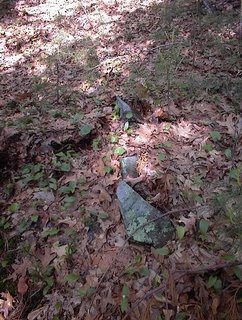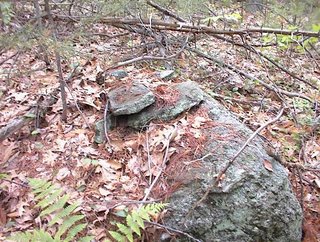These pictures are from the colonial farm site gallery. The first picture shows 3 boulders with a pile of small stones filled in between them. That vein in the boulder in front is quartz.
http://larryharrop.com/main
If you look behind and to the left, you'll see a small downed tree leaning on a boulder. That's a split boulder that has been filled.
http://larryharrop.com/main
Right in front of the boulder with the quartz vein, there is another split and filled boulder.
http://larryharrop.com/main
This site was confusing. You have the obvious colonial cellar hole and field walls. Then peppered throughout the site are features like these. This is one of many interesting features at this site.

















































